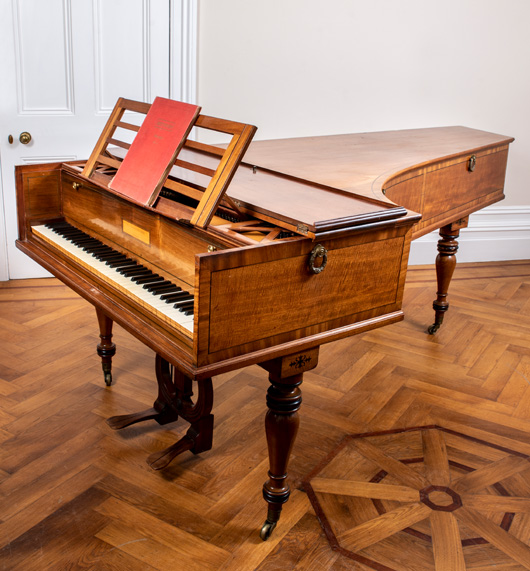Grand piano by John Broadwood and Sons, London, 1823
Compass: FF - f ''''
English grand action.
Pedals for una corda / due corde and divided bass / treble dampers..
Compass: FF - f ''''
English grand action.
Pedals for una corda / due corde and divided bass / treble dampers..

By the time this instrument was built in 1823, the piano was firmly established as the dominant keyboard instrument in all public and private musical contexts in England. Whilst every piano type, whether horizontal or upright in form, was subject to structural, mechanical and acoustical improvements by builders, the grand was a focus for innovation. Among the driving forces for the improvement of established types was a developing musical aesthetic and increasingly expressive pianism pioneered by composers like Ludwig van Beethoven. Such music required a piano action that was robust, yet light, and stringing that was heavy, yet capable of brilliance. The structural reinforcements to the case of this instrument reflect these developments without compromising the familiar elegance of form and cleanness of line of the early piano. The sustain pedal of this instrument, which raises the dampers from the strings, is divided into two halves that can be depressed individually or together. Unlikely though it may seem against a backdrop of rapid technological progress, this might have been a revival and transplantation of a feature common to early square pianos, where two hand levers raise independently the bass and treble dampers. In 1817 Thomas Broadwood made a gift to Beethoven of a grand piano with this very feature, but it was not to become standard in pianos built by the firm.
When you play, never mind who listens to you
Robert Schumann